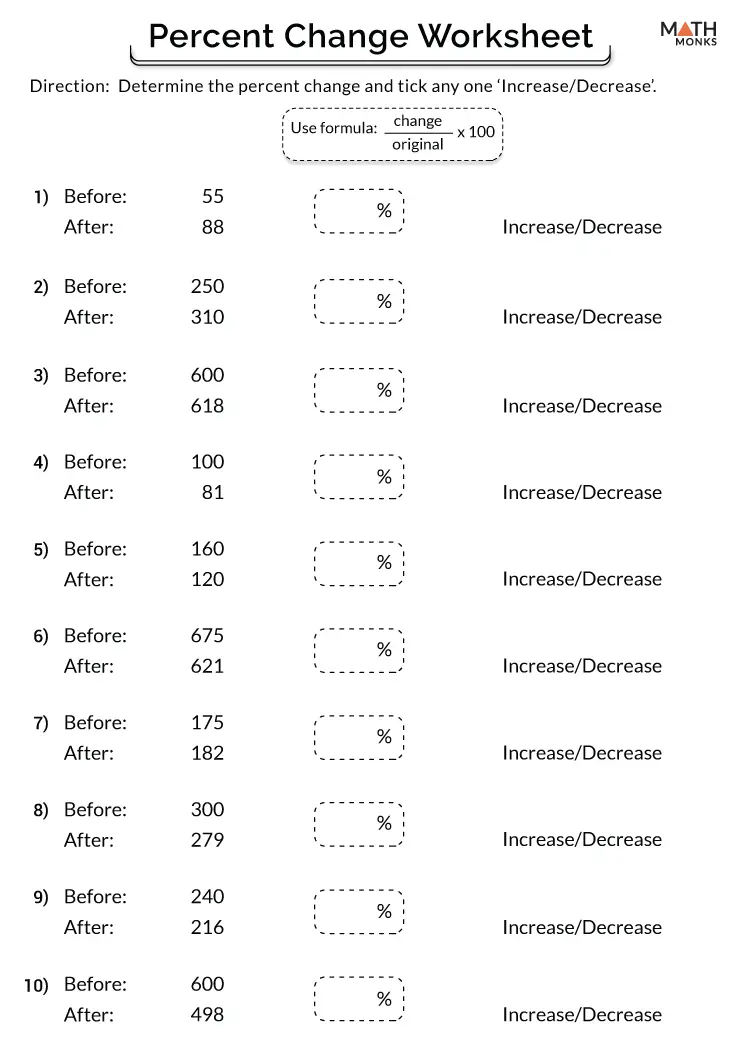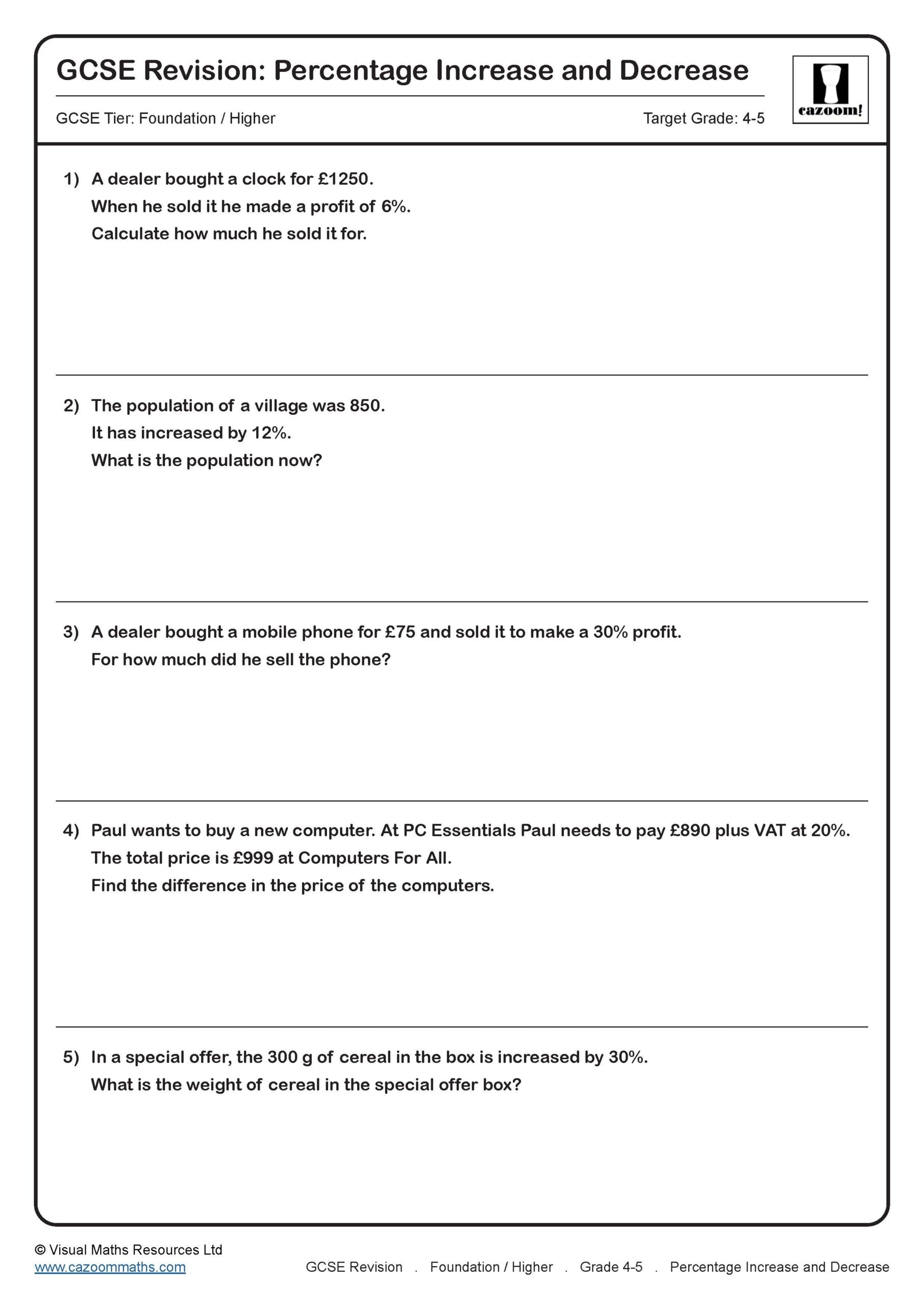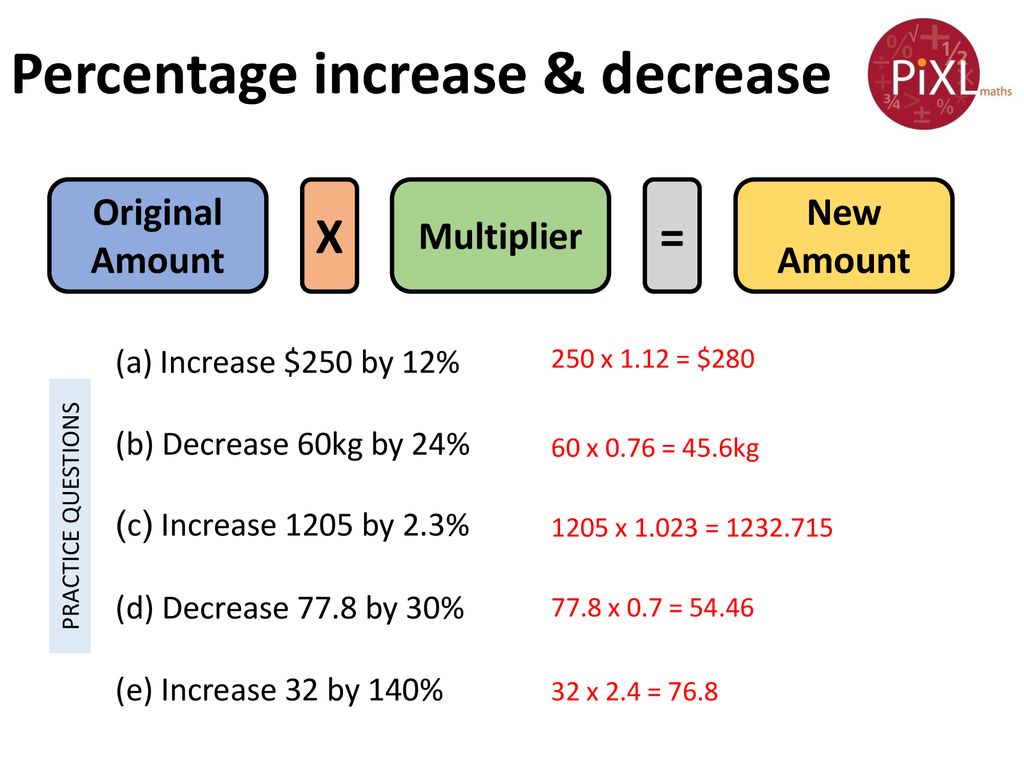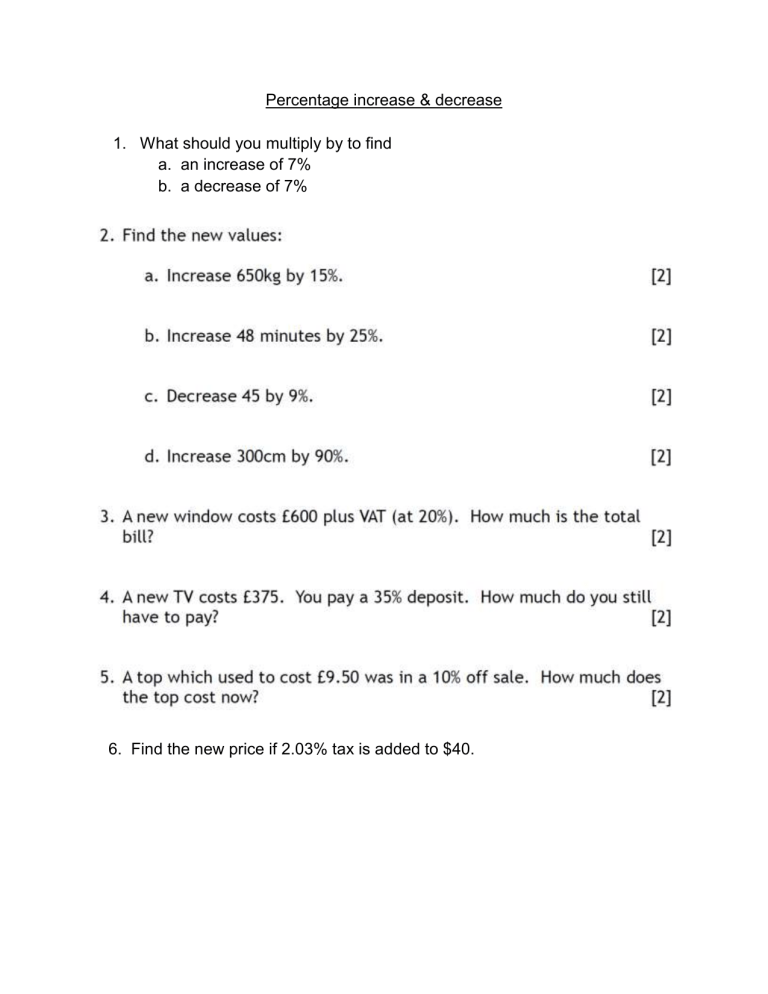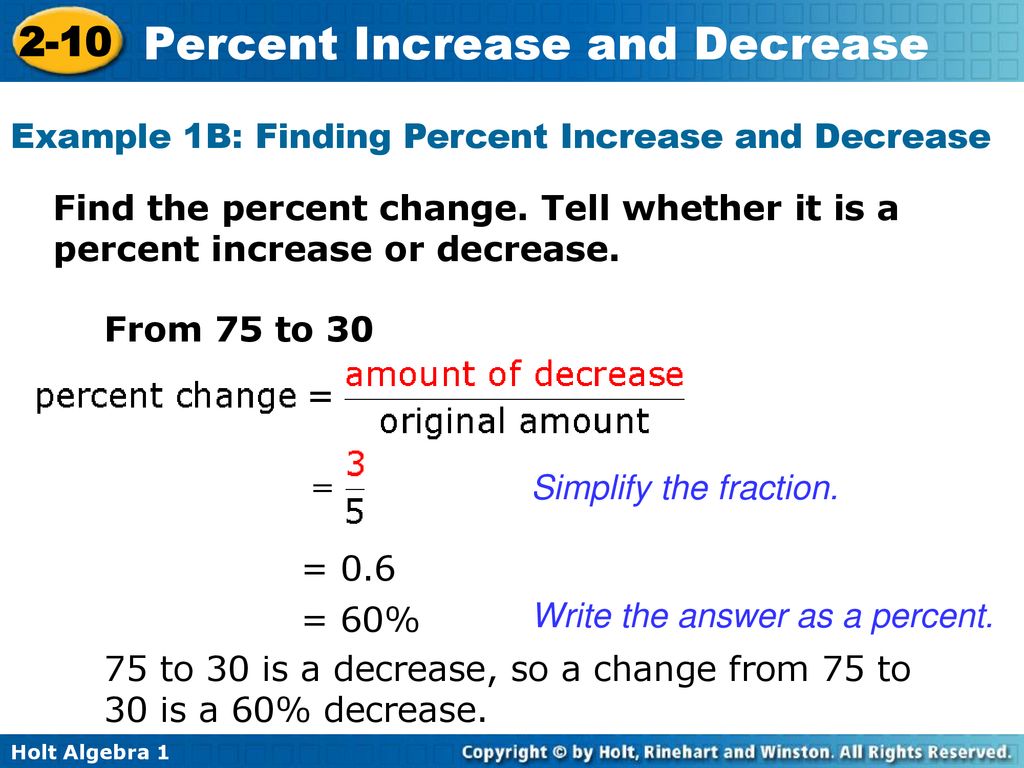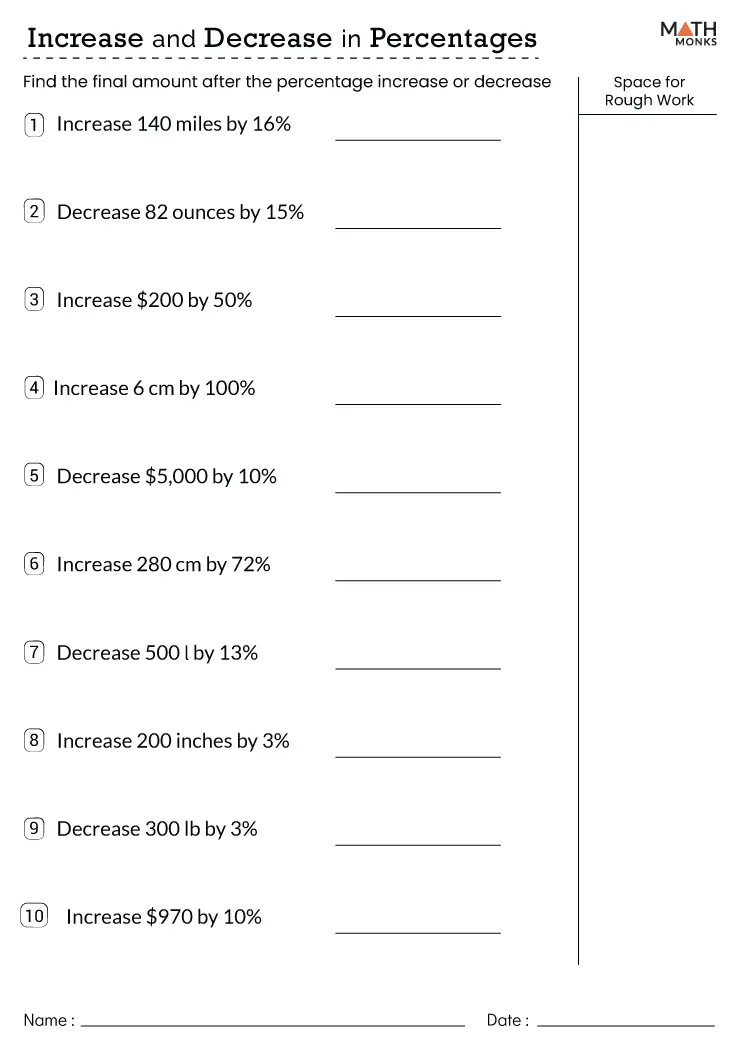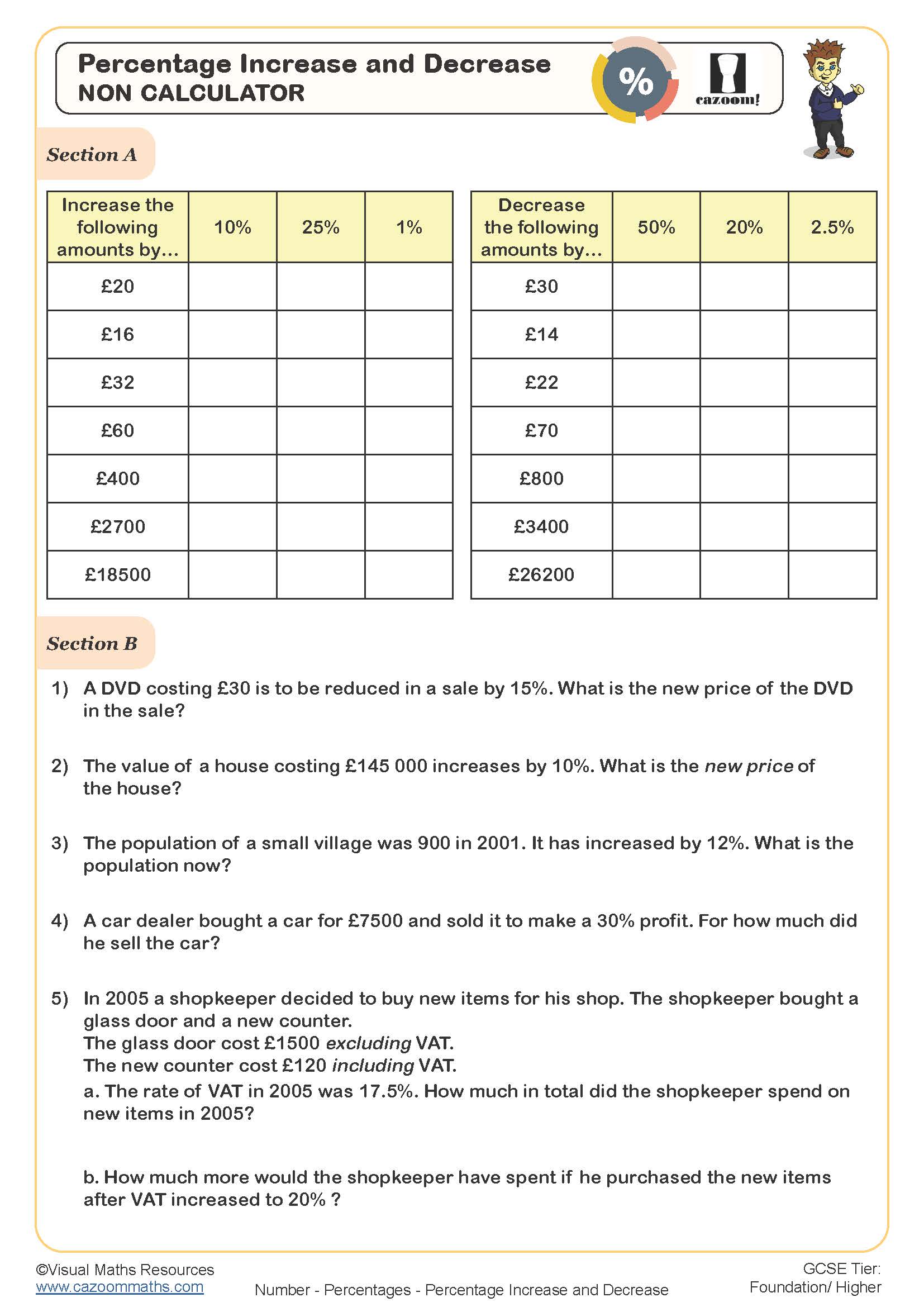5.1 Percent Increase And Decrease Answers

Economic indicators paint a complex, and sometimes contradictory, picture of the current financial landscape. Recent data reveals a curious phenomenon: a simultaneous 5.1 percent increase in certain sectors and a corresponding 5.1 percent decrease in others, creating uncertainty among economists and investors alike. This juxtaposition highlights the uneven recovery and underscores the challenges in predicting future economic trends.
At the heart of this economic puzzle lies a divergence between thriving industries and those struggling to adapt. The 5.1 percent increase, according to the Bureau of Economic Analysis (BEA), is primarily driven by growth in the technology and renewable energy sectors. Conversely, the 5.1 percent decline is concentrated in traditional retail and manufacturing, exacerbated by supply chain disruptions and shifting consumer habits.
Sectors Experiencing Growth
The technology sector's robust performance is fueled by continued demand for cloud computing, artificial intelligence, and cybersecurity solutions. Companies like Amazon Web Services (AWS) and Microsoft Azure are reporting significant revenue gains, reflecting the increasing reliance on digital infrastructure across industries.
Renewable energy is also experiencing a surge in growth, spurred by government incentives and growing environmental awareness. Solar and wind energy projects are attracting substantial investments, contributing to job creation and a cleaner energy mix.
Expert Opinions on Growth
Dr. Anya Sharma, a leading economist at the Peterson Institute for International Economics, commented, "The growth in technology and renewable energy is a testament to innovation and the changing priorities of consumers and governments. These sectors are likely to remain drivers of economic growth in the coming years."
Sectors Facing Decline
Traditional retail, particularly brick-and-mortar stores, continues to struggle in the face of online competition. The rise of e-commerce giants like Amazon and changing consumer preferences have led to store closures and job losses across the country.
Manufacturing is also facing headwinds, including supply chain disruptions, rising raw material costs, and increased automation. The automotive industry, in particular, has been severely impacted by the global chip shortage, leading to production cuts and lower sales.
Challenges and Contributing Factors
Supply chain bottlenecks, exacerbated by the pandemic and geopolitical tensions, continue to hamper manufacturing output. Rising inflation is also eroding consumer purchasing power, further dampening demand for goods and services.
Professor David Miller, an economist at the University of Chicago Booth School of Business, stated, "The decline in traditional retail and manufacturing reflects a broader structural shift in the economy. Automation and globalization are reshaping the job market, requiring workers to acquire new skills and adapt to new industries."
Policy Responses and Future Outlook
The government is considering various policy measures to address the uneven economic recovery. These include investments in infrastructure, job training programs, and support for small businesses.
The Federal Reserve is also closely monitoring inflation and unemployment, adjusting monetary policy to maintain price stability and full employment. However, the effectiveness of these policies remains uncertain, given the complex interplay of global economic forces.
Looking ahead, the economic outlook remains uncertain. While technology and renewable energy are expected to continue to grow, the future of traditional retail and manufacturing is less clear. The ability of workers and businesses to adapt to these changing economic conditions will be crucial in determining the overall pace of recovery.
"The key to navigating this period of economic uncertainty is to invest in education, innovation, and infrastructure," argues Treasury Secretary Janet Yellen. "We must equip workers with the skills they need to succeed in the 21st-century economy and create a more inclusive and sustainable growth model."
